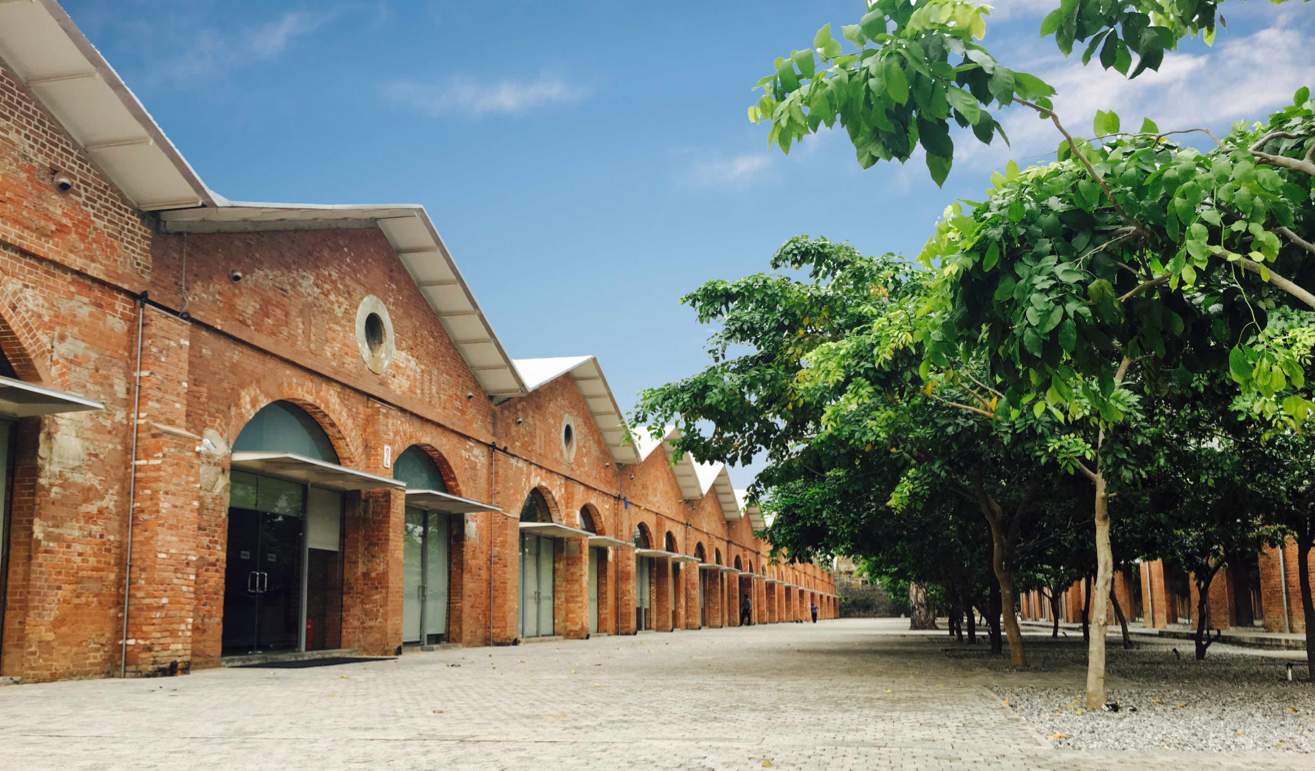If you’re a regular traveler in the Maradana area or like my friend Lahiru if you’re sick of seeing the Maradana area on your way to and from work, you would have probably seen a collection of brick buildings lined up just opposite the Elphinstone Theatre. Flanked on either side by a multitude of trees, not much is known or seen about this place till one enters it. Even then, you will be faced with a rather stern security guard with a board stating that the entrance is only of designated vehicles. This building or rather this collection of buildings is now commonly referred to as Trace Expert City. Sound familiar? If you’re in the tech industry in Sri Lanka, then it’s a no-brainer. But very few actually know the story behind Trace Expert City.
Why build Trace Expert City?
Sri Lanka’s primary exports are Tea, Rubber, and Coconut. But lately, we’ve come to realize, or rather other countries and economies have come to realize that the IT workforce of Sri Lanka was indeed a force to be reckoned with. Be it for outsourcing or tech support, Sri Lanka’s ICT landscape was indeed as profitable as any other field (literally).

The first question on anyone’s mind is “Why an IT Park?”. Well, the need for an IT Park or an Innovation Park, as the team prefers it to be called, was a sought-after one. It was primarily to foster innovation and creativity in the country whilst also helping reduce the brain drain (where local graduates and professionals seek employment abroad because they have no employment opportunities in Sri Lanka).
There’s no “I in “Team”
A team comprising of Dr. Ajith Pasqual, Dr. Sankalpa Gamwarige, Ranjith Rubasinghe, Kusal Subasinghe, Mano Sekaram, Stephan Joachim, Dr. Prasad Samarasinghe, Dr. Harsha Subasinghe, Kushan Kodituwakku, and Mangala Karunaratna put their heads together to set up a place for an IT Park. They called it Technologically Re-Awakening Culture of Excellence (TRACE). It would soon just be called Trace Expert City. On the 10th of April 2013, Technologically Re-Awakening Culture of Excellence has declared a Company Limited by Guarantee and a certificate of Incorporation was issued. On the 28th of May 2013, these innovative souls signed the Article of Association. Thus, the Expert City was a membership, nonprofit association limited by guarantee within the meaning of Section 34 of the Companies Act, No. 7 of 2007.
The Government, specifically the Urban Development Authority, from their end showed their support as well and gave the team a number of possible choices to set up shop. The locations varied from Hambantota to the land that currently is Independence Arcade, all the way to Anuradhapura to even Jaffna. The choices were many, but the viability was futile as these locations were geographically distant to Colombo. That was until they laid eyes on a quaint little collection of buildings in the Maradana area just overlooking the Maradana Railway Station. This was Tripoli Market Square. At the time, it was an area of land that served as a market back in Colonial times. It was now just a collection of warehouses that were either falling apart or close to.
Tripoli Market Square, I Choose You!
It was decided by the team that this would be the place to set up the IT Park. The choice of picking Maradana was simple. It was geographically in close proximity to Colombo as well as transportation methods (the Pettah Bus Halt and the Fort Railway station being two key transportation hubs). In addition, educational institutions such as the Technical College, Ananda College, and cultural landmarks such as Elphinstone Theatre, Tower Hall, etc. are also a part of the history of Maradana.

Image credits: Mangala Karunaratne

The committee then enlisted the aid of Thisara Thanapathy who would be the Architect and guiding hand in making Trace Expert City indeed look like what it should be. As the project was carried out by the Urban Development Authority, it fell under the jurisdiction of the Ministry of Defense and Urban Development of Sri Lanka. The then Secretary to the Ministry of Defense and Urban Development, Gotabaya Rajapaksa assigned a workforce from the Sri Lankan Army dedicated to aiding in terms of construction and reconstruction. As such, the Urban Development Authority would be in charge of supervising the project in addition to making an investment of US$7 million, back In the year 2012.
This initial investment would be recovered by renting out the buildings at the park to companies willing to come aboard. As such the Park would welcome companies with varying creative backgrounds such as electronic, software, fashion design, pharmaceutical and any other creative professionals focused on exports.
The phases of Trace Expert City
The conversion of Tripoli Market Square to Trace Expert City would require a number of procedures such as construction and reconstruction of the existing infrastructure, in order to be compliant with both Thisara’s goals and the intended vision of TRACE. Remember, as this was abandoned for a while, it meant a lot of heavy lifting had to be carried out in order for the team to start from scratch. As such, the transformation of Tripoli Market Square consisted of a few key phases which we have listed here.
Phase One
This phase includes the 13 bays of British period warehouses amassing an area roughly of 30,000 square feet & a single-story building, done in a later period of the Tripoli Market Square. They are each rectangular in shape. In order for the bays to be habitable and office-worthy, they had to be renovated and repaired whilst also keeping their original architectural design intact. Wherever the walls were broken, it was repaired with brick and cement to keep the original look of the building. Elements such as the ducting for the air conditioning and the mezzanine floors have no physical contact with the actual brick of the warehouses/office spaces but rather were fixed separately.

Phase Two – Existing Renovation
The development of this phase involves the new construction and renovations of the existing British period buildings of an area of roughly 400,000 square feet and will cost approximately LKR 3 Billion. As it is, a part of the land of phase two (which is on the North Western side of the development) belongs to the Railway Department, they are in the process of negotiating with the railway department to develop.


Image credits: Thisara Thanapathy
Phase Three
This phase involves the construction of a high-rise building that would be spanning around 35 floors and accommodate rentable office space of approx. 500,000 square feet. This phase also includes a City Hotel with serviced apartments and two 8 storied office blocks.

Image credits: Thisara Thanapathy and Mangala Karunaratne
In addition, this includes creating a path that connects Trace Expert City to the area opposite which is the Elphinstone Theatre, and also a path that would connect to the Floating Market located in Pettah This would essentially create a walkway that would stretch the distance from these locations that people can use. Fully completing Phase Two would take around 2 years.

There would also have a common courtyard and public plaza with a possible playground so that people can come and look around, enjoy the view and the kids can entertain themselves as well. Furthermore, the passage leading towards the entrance of the Phase 3 premises can be a place where people can relax or even bring along a guitar and just start playing for entertainment.

Image Credits: Thisara Thanapathy and Mangala Karunaratne
Once everything is complete, you’re looking at an entire area of Maradana that is a city unto itself. From the 13 bays to the high rise luxury complex, to the mid-rise complex, and the courtyard and plaza, Trace Expert City would be the next place to be to encourage, innovate and cultivate Information Technology.
The Current Status of Trace Expert City
As mentioned above, if one were to make their way to Trace Expert City now, one would see a collection of companies occupying the 13 bays that were renovated. Each of these bays is home to companies the likes of WSO2, Calcey, CodeGen, Orange, and the London Stock Exchange Group. The office space of the bays is rented out to the companies and utility bills such as water and electricity are paid to the management of Trace Expert City. Construction and development of the 13 bays are, for all intents and purposes, complete with electricity, air conditioning, and even telephone lines in operation. The Companies have all moved into the 13 bays, and set up operations, and are functioning on a daily basis and work goes on behind their doors as usual.


What about the rest of the phases?
Well, that’s where things get a tad complicated. According to Gemunu Senanayake, CEO of TRACE, because Sri Lanka as a country has a debt of US$ 70 Billion, the Government of Sri Lanka has no financial resources to aid in any further developments. Furthermore, as part of the land in the master plan of the Trace Expert City belongs to the Railway Department, discussions are already underway with the department to obtain the land. If successful, development can go ahead with the whole development which would amount to an estimated LKR 15-18 Billion.
Currently, Gemunu and the team along with a team of consultants are in the process of finalizing the feasibility of Phase 3 and even the feasibility of adding further elements to the overall bigger picture. The said report would have to be submitted to the Urban Development Authority (UDA) in order for the approval to be given. Once approval is given, it’s just a matter of bringing it all together. According to Gemunu, the process of approval cannot be given a timeframe as there are a number of formalities that have to be processed in order to gain approval. They have also discussed with NDB Bank who have shown interest and have agreed to come aboard and provide funding to carry out the next stages of development.
Interesting times are indeed ahead
Well, there you have it. From humble beginnings, the team at TRACE has been working hard to make Trace Expert City a reality. They’ve had their share of sleepless nights and obstacles. Some of these obstacles were so hard-hitting that they even had to stop development for prolonged periods. Nonetheless, what started off as a brilliant concept followed by hard work and determination is now almost a complete reality. Since they are in the process of discussing with private investors, the only obstacles seem to be negotiating with the Railway Department. Support from the Government (UDA & relevant ministries) is also essential to make this a success).







GIPHY App Key not set. Please check settings